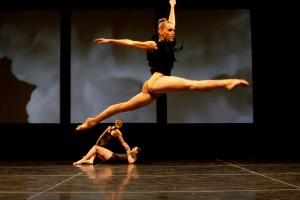by Edna Landau
To ask a question, please write Ask Edna.
I have greatly enjoyed reading your blog on Musical America’s website and have encouraged students to send in their questions. This time, I have one of my own: During your artist management career, what were the most common factors or mistakes (within an artist’s control) that caused them NOT to be re-hired for a subsequent engagement? —Barli Nugent , Assistant Dean and Director of Chamber Music, The Juilliard School
Dear Barli:
In contemplating your important question, I thought it would be a good idea to respond separately for singers/instrumentalists and conductors. In the case of the former, the primary reason would probably be the failure of the artist to render an artistically satisfying performance. This could be reflected in several possible ways: technical sloppiness, unsatisfactory sound projection, absence of a compelling musical statement, or lack of stylistic awareness. Any of these could be due to a lack of confidence that might stem from the artist performing repertoire in a highly exposed situation without having had adequate opportunity to try it out beforehand. If these were not an issue, we might move on to the matter of interpersonal relationships, especially in the case of an orchestral engagement. A vote of no reengagement is certain for an artist who tells an orchestra how to play while the conductor is on the podium, or who speaks disparagingly to the conductor about the orchestra’s performance within earshot of the musicians. Another pitfall to be avoided is a decision to play an encore without first checking with the conductor and with the orchestra manager. Although this may not, on its own, account for a failure to get reengaged, if the encore sends the orchestra into overtime, thereby incurring extra cost for them, their future recollection of the artist might not be all that rosy.
Interpersonal relations offstage are of equal importance. An artist must appear on time (preferably early) for all rehearsals and for the performance. They should be reachable throughout the engagement and not change hotels without telling anyone. Most presenters will ask artists to make at least a brief appearance at a post-concert reception. This request will be made in advance of the date of the performance. If an artist refuses for no apparent reason, it could have a bearing on their chances for getting reengaged, especially if the performance was less than stellar. An artist who resists playing in a smaller venue and pushes the presenter to put them in a larger and seemingly more prestigious one, where they end up drawing only half a house, shouldn’t expect a re-invitation any time soon and would be well advised to respect the presenter’s judgment in the future.
In the case of conductors, it goes without saying that someone who delays in sending marked parts (if they elect to do so) and rehearsal orders until long past the deadline, doesn’t start out with the orchestra on the right foot. The rehearsal period is critical, especially for a young conductor making a first impression. Often, musicans’ impressions of a conductor are indelibly formed during this time and they may not change even if the conductor delivers an effective performance. A frequent criticism is that they talked too much during rehearsals, seemingly because they couldn’t adequately convey their musical goals through their gestures. The objection is exacerbated when the spoken words don’t enhance the musicians’ understanding of what is expected of them or enlighten them in some way about the music they are playing. They may be asked to repeat passages without being told why, leading them to conclude that the repetition was really for the benefit of the conductor who needed another chance to get it right. It should also be mentioned that a conductor who chooses to re-seat the orchestra without prior permission from the music director should not expect to return to that orchestra any time in the near future.
One can never stress often enough that the music business is built on relationships. Artists who endear themselves to presenters are more likely to be invited back. This includes something as basic as treating the presenter’s staff and the venue’s front of stage and backstage crew with respect and warmth, showing appreciation of their efforts. The icing on the cake is an artist who attends a post-concert reception and tells donors how fortunate they are to have such a special presenter in their community and how their contributions make all the difference in the world. Some artists have been known to send hand-written thank you notes to a presenter following the engagement, a certain way to stand out from the crowd. An orchestral soloist who acknowledges the orchestra’s excellent performance while taking their bows, clearly understands that their successful performance was a true collaborative effort — a gesture that does not go unnoticed. I have known some soloists who have even baked cookies for the orchestra. While I personally think that may be going a bit far, if your students do it, my suggestion would be chocolate chocolate chip.
To ask a question, please write Ask Edna.
©Edna Landau 2011


